10 galley kitchen ideas that prove just how stylish and functional this design can be
Galley kitchen ideas, with their linear simplicity, have a timeless appeal no matter how big or small your space

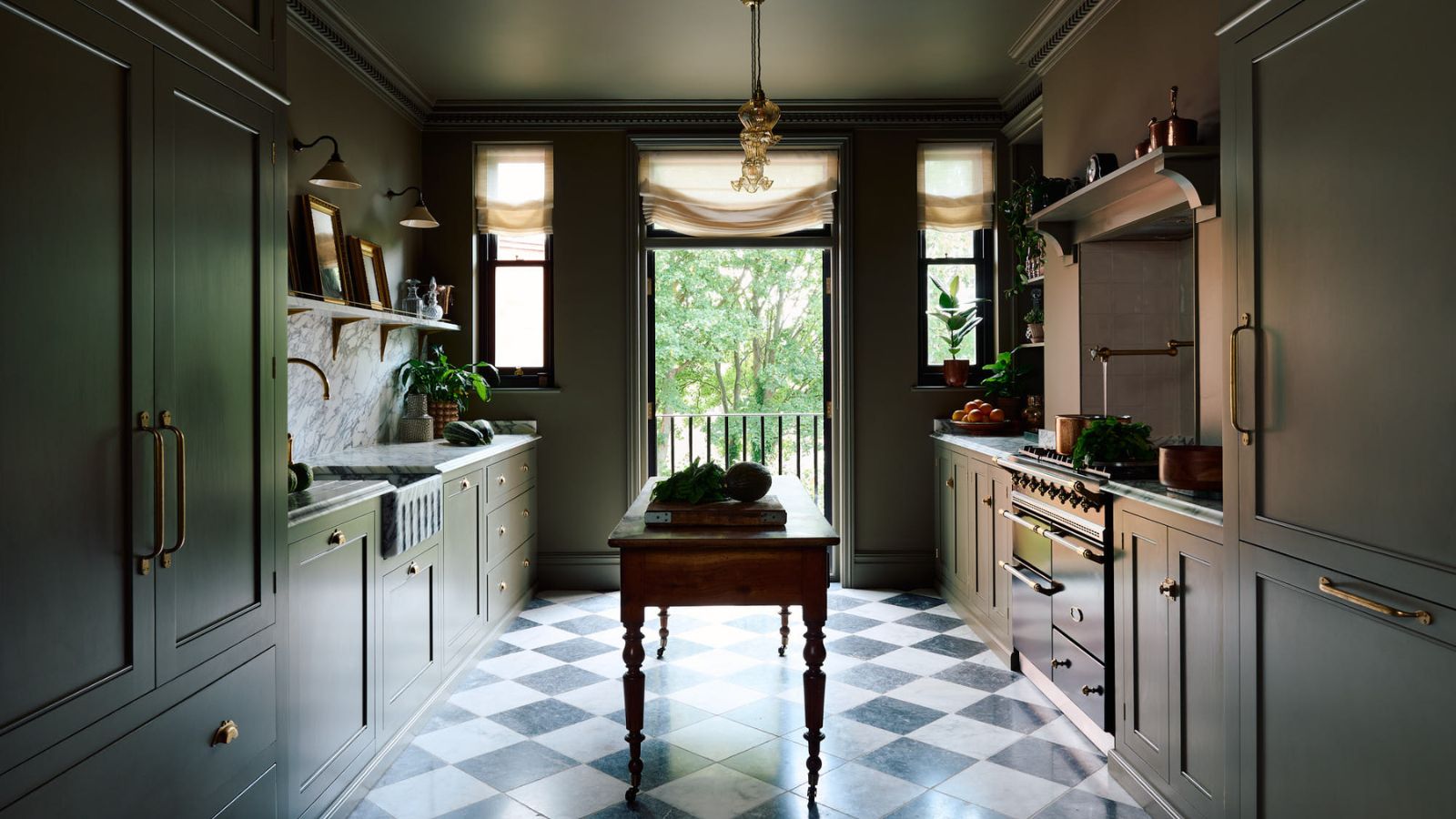
- 1. Add interest to a galley kitchen with a mix of cabinet fronts
- 2. Try a galley in an open plan kitchen
- 3. Declutter with the right storage
- 4. Keep your galley kitchen ppen and bright with open shelving
- 5. Trick the eye with light, color, and minimal cabinetry
- 6. Add an island to a wider galley kitchen
- 7. Light up small galley kitchens
- 8. Opt for handleless cabinetry
- 9. Keep cabinets at eye-level
- 10. Freshen up your color scheme
Galley kitchens are popular in rooms of every style and size, but are especially useful if you are dealing with a narrower footprint. It's a design that maximizes storage and counter space – and with the right approach, can be utterly chic.
And while so much has changed in the way in which we design and use our kitchens, there is something reassuring about how the galley kitchen has adapted to the newfound sense of space in kitchen ideas that are both contemporary and traditional, large and small.
But how can you take your galley kitchen ideas from a space that is purely functional to one that feels stylish and showcases your personality? Here's how the experts would do it, and how you can instantly elevate your design.
10 galley kitchen ideas to turn a narrow room into your dream space
Named after a ship’s cooking space, galley kitchens were originally associated with simplicity and tight spaces – there’s not much room for superfluous detail on the average ship.
But the reason that this kitchen layout works is that they are ergonomically sound – it's easy to place everything so it is to hand. From colors and decor to the best kitchen galley layouts and storage solutions, here's how the experts approach designing the best galley kitchen.
1. Add interest to a galley kitchen with a mix of cabinet fronts
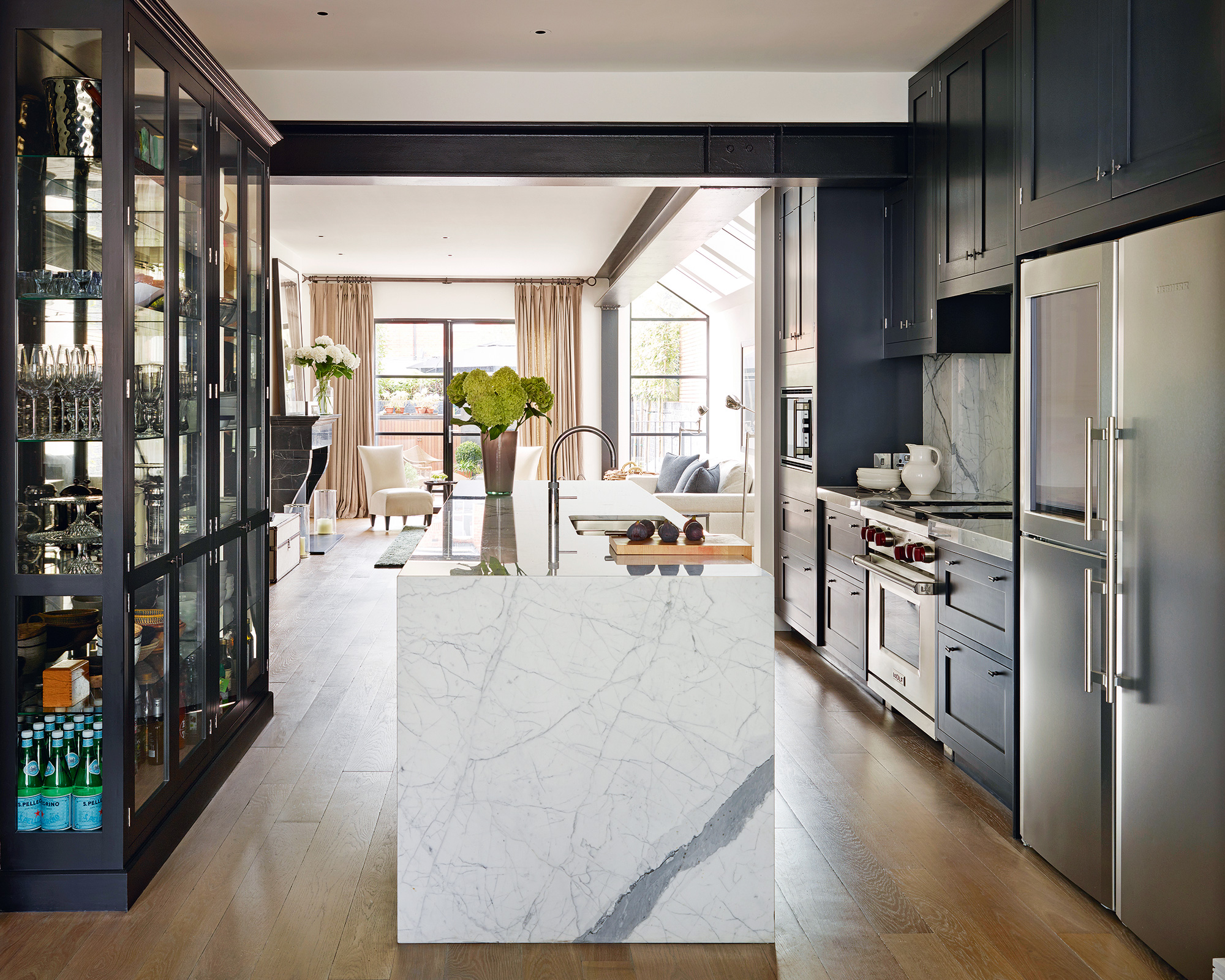
Open plan kitchens and spacious islands are partly to blame for wall units falling out of fashion – when you’ve got oodles of space to play with, it’s easy to see why you would want to keep the look open and save reaching overhead.
But wall units will always have a valid place in small kitchens and narrow rooms, where you can make the most of the height and still have usable countertop space. The key is to introduce different materials for visual interest.
Design expertise in your inbox – from inspiring decorating ideas and beautiful celebrity homes to practical gardening advice and shopping round-ups.
In this design, glass-fronted cabinets on one side create a display-style cabinet and instantly break up the solid run of cabinetry. This approach creates a space that feels more open without compromising on storage.
2. Try a galley in an open plan kitchen

Galley kitchens aren't just for narrow spaces, they can be a great choice for open-plan kitchens too. Galley kitchens can be part of a much larger space, featuring a wall-hugging galley run with a long island running parallel, separating a living or dining area beyond.
Although following the double galley footprint, the result is a lighter, more open, and more sociable space.
3. Declutter with the right storage

Good kitchen storage ideas are perhaps the most important element to consider when planning a galley kitchen. Choose a scheme that includes plenty of storage, and if wall units aren’t possible in all areas, go for an abundance of floor units with drawers.
There is a risk with galley kitchens that they can be totally dominated by cabinetry because you are squeezing so much into a smaller space. So be inspired by this space and just ditch the wall cabinetry on one wall. You still have plenty of storage as you aren't losing the wall cabinets altogether, but this approach will feel lighter and more open.
4. Keep your galley kitchen ppen and bright with open shelving
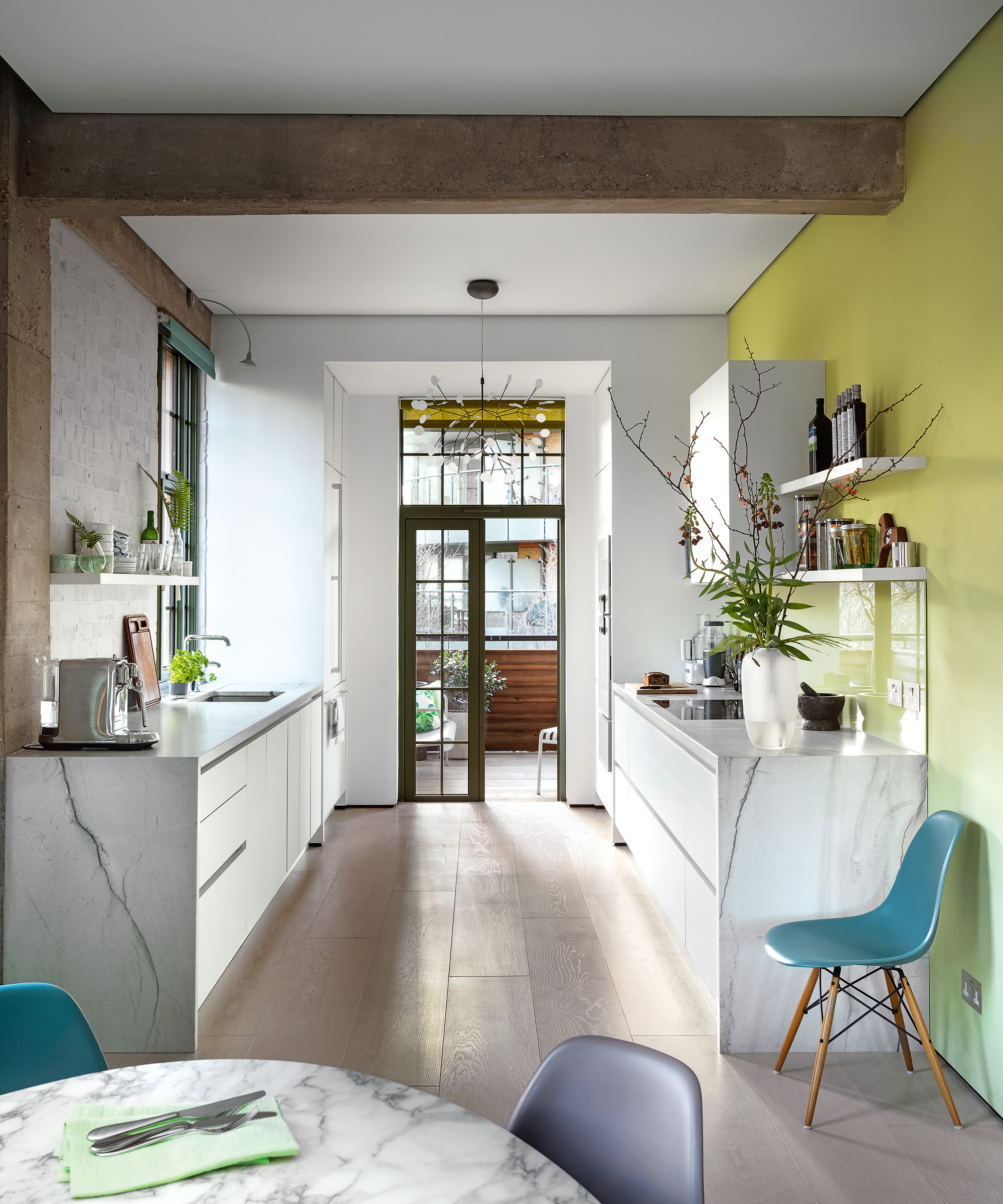
If you don't need your kitchen to provide a ton of storage, you could leave the majority of wall cabinets out of your design. Switching cabinets for kitchen shelving will instantly make the space feel bigger and less cluttered. Plus, it gives you space to add some decor into a room that can be tricky to inject with some character and personality.
Keep your shelving the same color as the rest of the cabinetry below for a seamless look, and have fun displaying colorful glass bottles, storage containers, and too-pretty-to-hide-away teapots.
5. Trick the eye with light, color, and minimal cabinetry
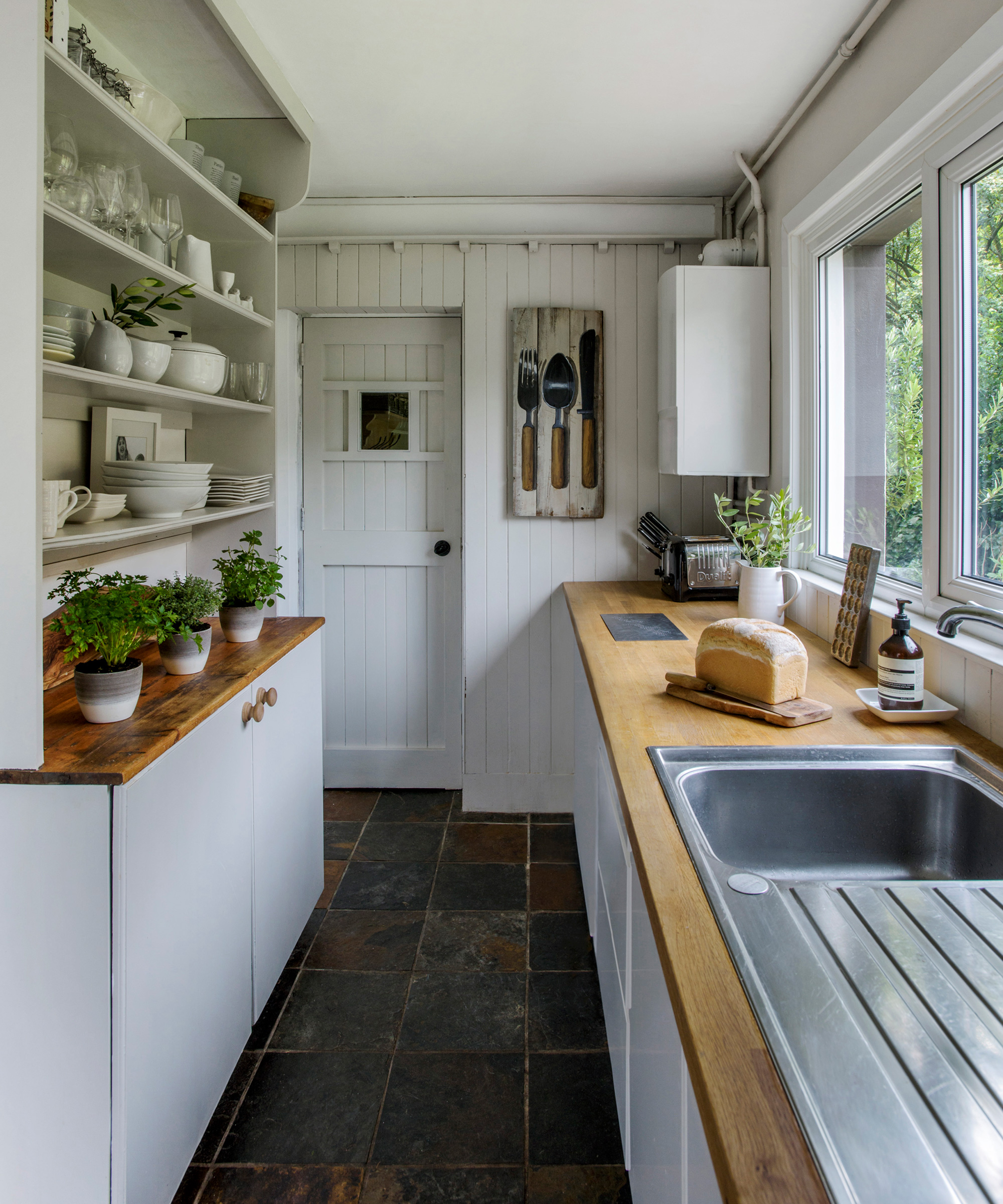
Galley kitchen ideas are particularly suited to more compact spaces, as they ensure you still have the countertop space and appliances you need while still providing essential storage for small kitchens.
The trick is to make the space work for you – make it look bigger by using light colors and reflective surfaces. Opt for lighter countertop materials and glassy paint finishes to bounce light around the room while still looking chic.
And try to avoid too much large, bulky cabinetry that blocks natural light from filtering around your kitchen. If you need the storage space, keep full-length cabinets to one side, and allow the opposite side to feel more open and airy.
6. Add an island to a wider galley kitchen

Galley ideas can work just wonderfully in a larger kitchen. The presence of two runs of cabinets provides an architectural frame to a dining table or kitchen island in the centre, while in open-plan areas, an island or run of units provides the cut-off between living and cooking zones.
Introduce a small dining area into galley kitchens by opting for a compact dining table, which can be pushed against an unused wall. Or, if you'd rather increase storage and usable prep space, a long, narrow island can be a striking addition.
7. Light up small galley kitchens
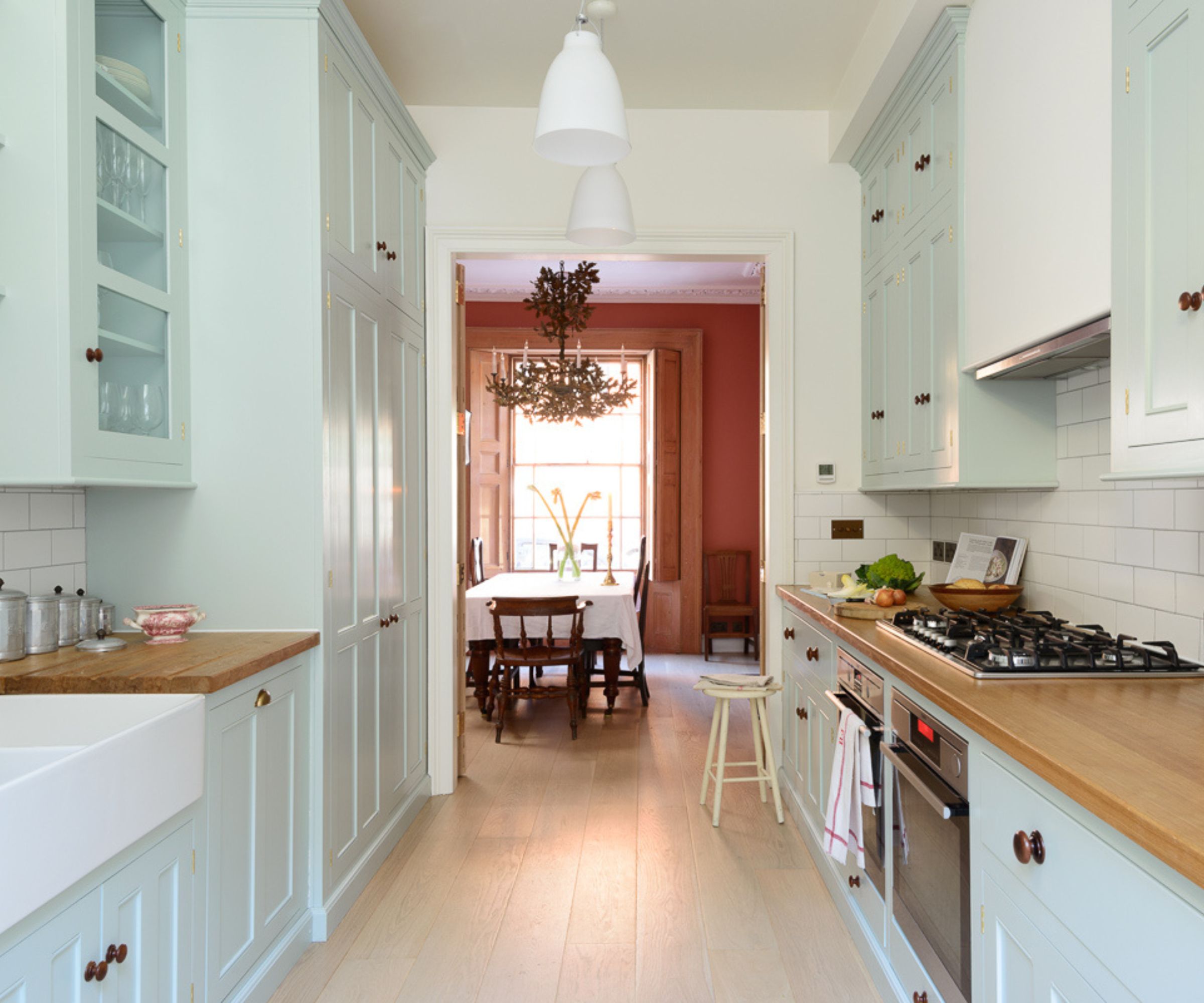
Kitchen lighting ideas can make or break both the aesthetics and function of a galley kitchen. A layered approach will bridge the gap between function and cozy appeal, but remember to ensure the task lighting is up to scratch.
'Keep galley kitchens as uncomplicated as possible – cleverly placed lighting will completely reinvent the space,' says Naomi Dean designer at Harvey Jones. 'Opt for countertop spot-lights, which will not only brighten your workspace but will illuminate the rest of the area. This will instantly brighten your kitchen and add the effect of more space.'
8. Opt for handleless cabinetry
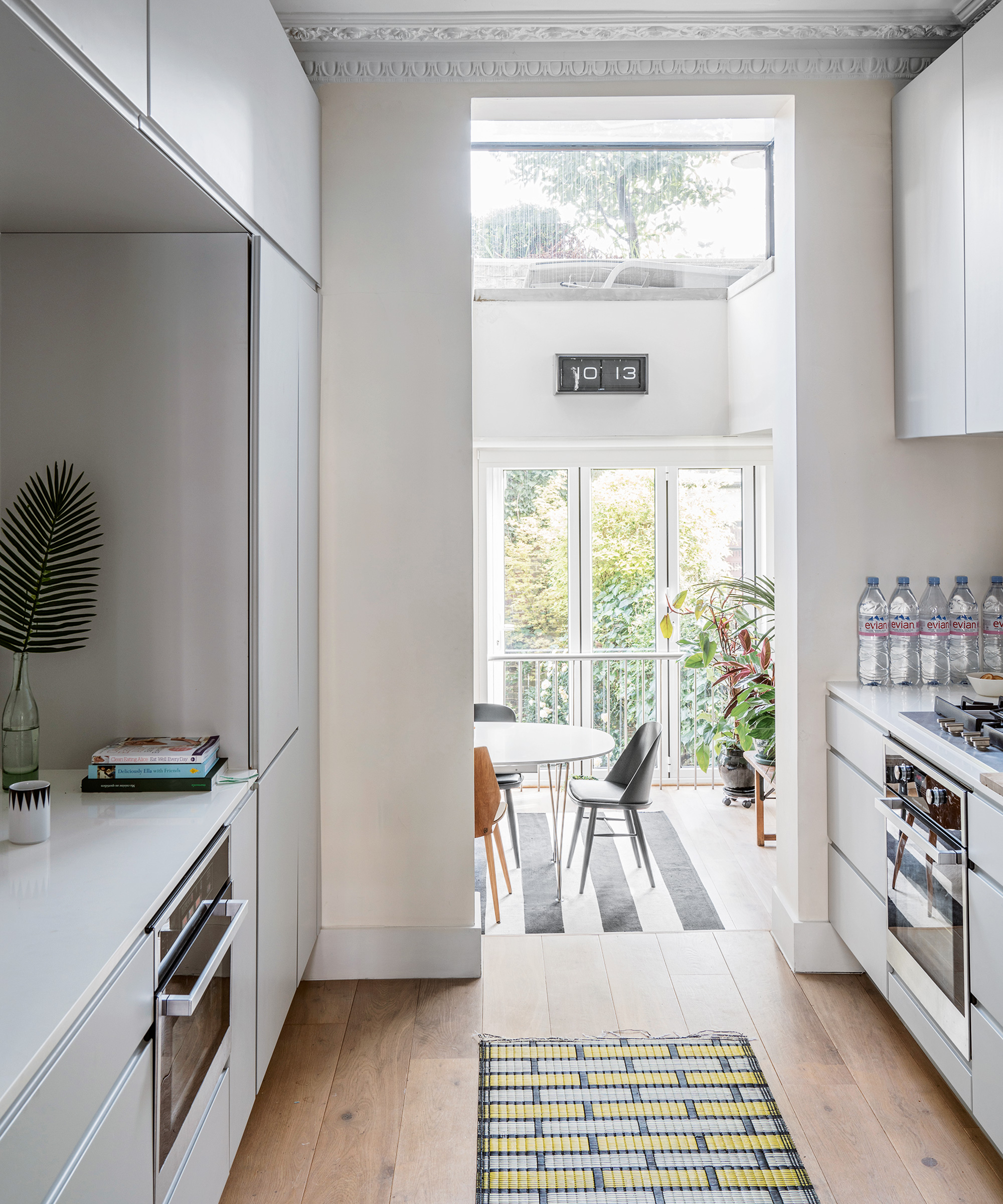
To make the most of available space without overwhelming a compact open plan room, consider a kitchen with handleless doors. It's a popular approach in modern space, but it can also give the illusion of greater space in a galley design, too.
Technological advances in push-open and close doors mean that it has become possible to dispense with handles in both wall and base cabinets.
9. Keep cabinets at eye-level
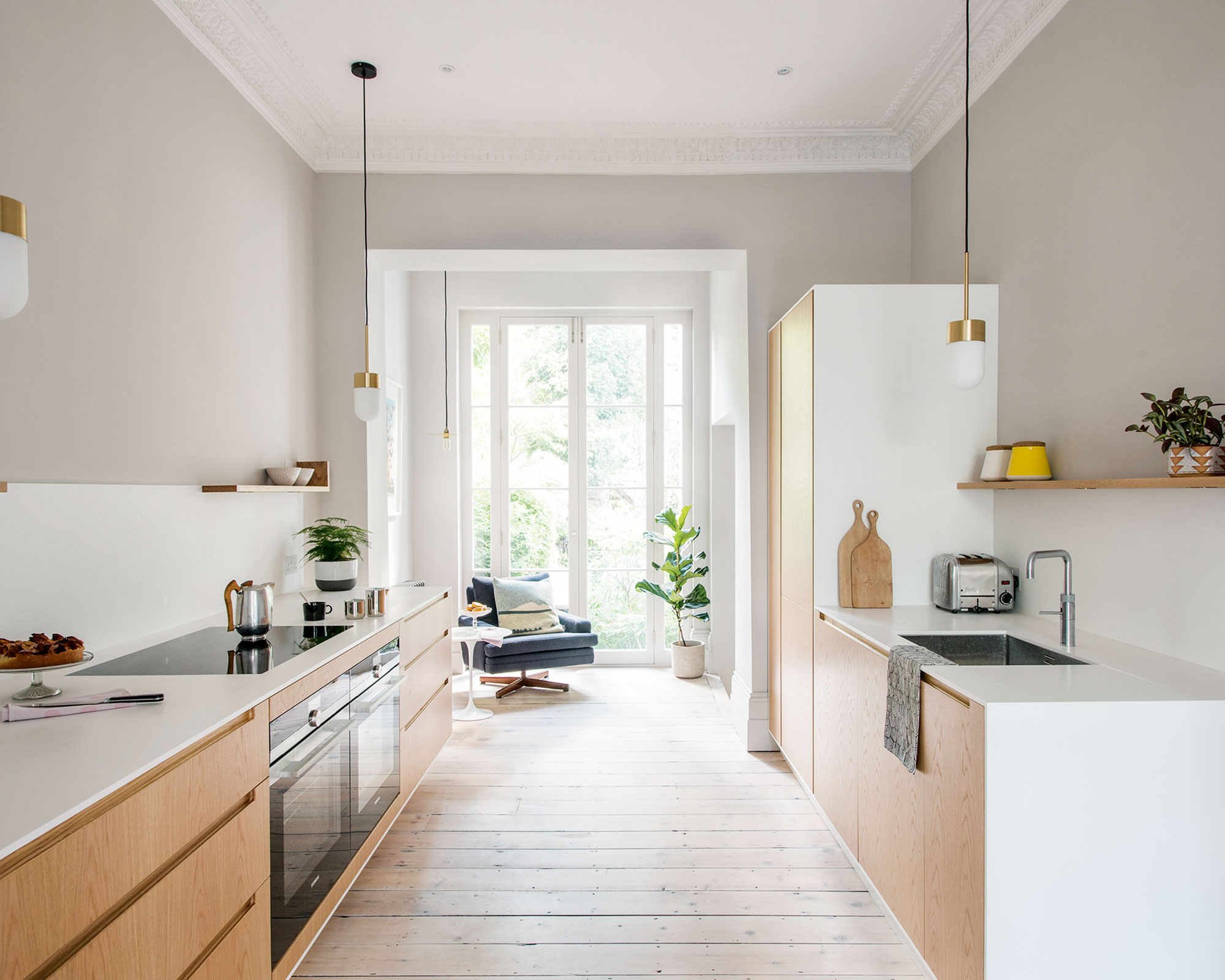
Keeping the walls cabinet-free at eye-level can make a galley kitchen appear wider. It’s also more comfortable to use kitchen countertops without cabinets looming above, so you won’t waste an inch of prep space. Position any tall storage required, e.g., fridge-freezers or larders, at the entrance to the room, and you’ll naturally look past them.
‘We deliberately avoided upper cabinetry to avoid closing in the airiness of the room. It also gives the original ceiling cornicing and architraves more breathing space,’ explains designer Jack Trench. ‘The base units are deeper than standard to maximize storage and counter space.’
10. Freshen up your color scheme
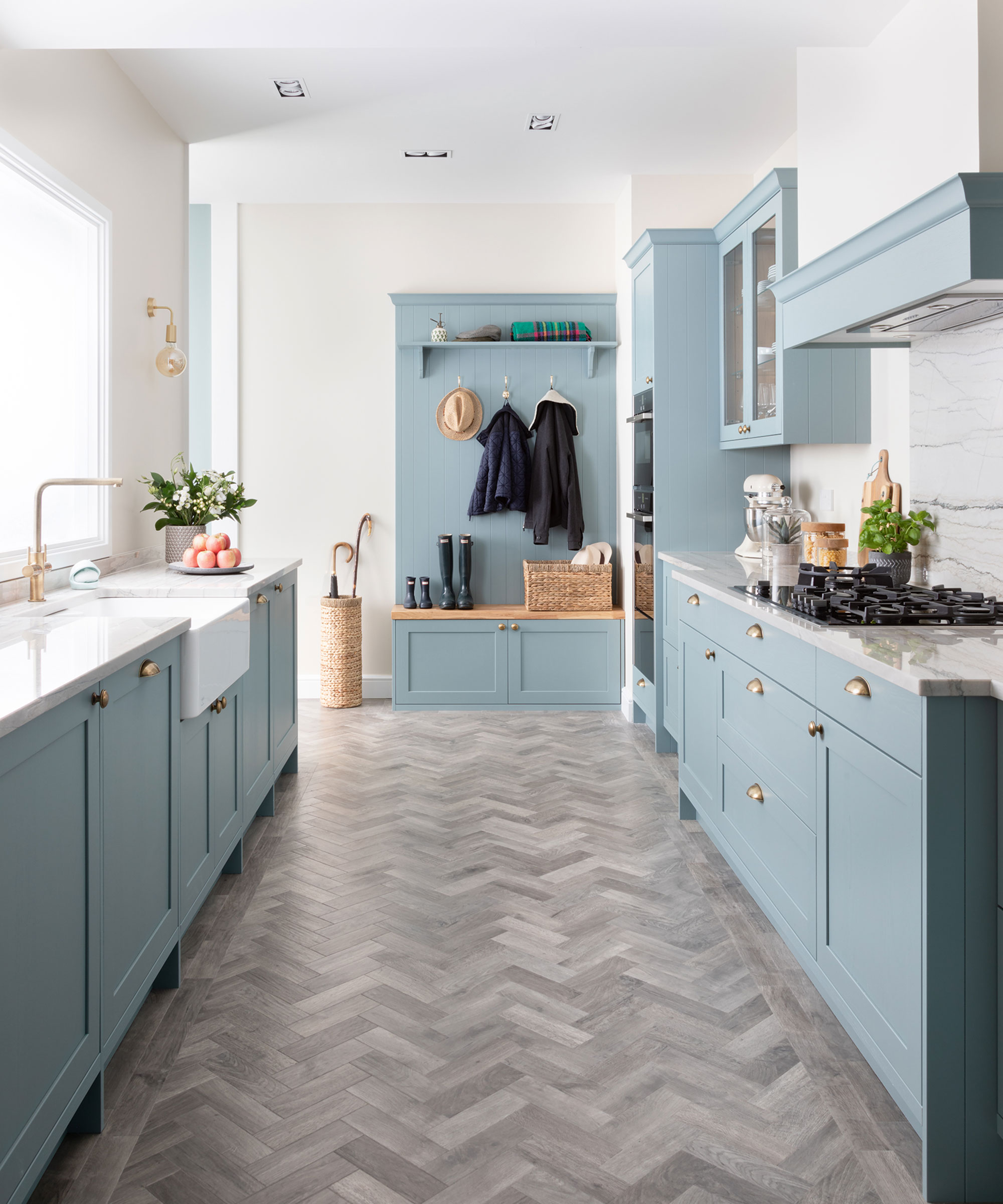
Lighter colors are an effective way to make a narrower space feel larger, especially in galley kitchens that often don't benefit from a lot of natural light. This could be warm neutrals, pastel hues, or even earthy palettes that bring the outdoors in.
Blues with yellow or gray undertones are ideal; red undertones will take you towards purple, which is more moody than upbeat. Think sky blue, duck egg, and soft teal. Or, for a hue that's dominating kitchen color trends, why not try a butter yellow kitchen?
Polished countertops and kitchen backsplash ideas, again in pale tones, also boast light-reflecting powers. Make the flooring your darkest choice and go for a warm white on walls and ceiling. This graduation from dark to light is an established way to square up elongated rooms.
Galley kitchen ideas have remained popular for a reason. They maximize storage in often small and awkward spaces, and although they are seen as tricky spaces to design, there are plenty of easy ways to make these narrow spaces feel open and lighter.

Jennifer is the Digital Editor at Homes & Gardens, bringing years of interiors experience across the US and UK. She has worked with leading publications, blending expertise in PR, marketing, social media, commercial strategy, and e-commerce. Jennifer has covered every corner of the home – curating projects from top interior designers, sourcing celebrity properties, reviewing appliances, and delivering timely news. Now, she channels her digital skills into shaping the world’s leading interiors website.
- Molly MalsomKitchens & Bathrooms Editor
- Linda Clayton